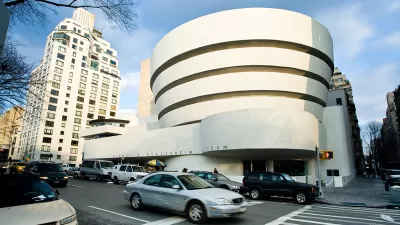The historic city of Pingyao, China, a UNESCO World Heritage Site, faces an uncertain future as it tries to find a balance between managing modern threats and petrification by preservation, as it attempts to maintain its historic character.
Debra Bruno examines the two extreme fates facing Pingyao, a 2,700-year-old village in the Shanxi province of China. One possibility allows tourists, overpopulation, pollution, rain, and dust from local coal mines to disintegrate the ancient city. The other is to preserve the town; but some are worried that preservation efforts could come off looking too perfect or even fake, as was the case with the overly restored city of Lijiang.
UNESCO, the Global Heritage Fund, the China Cultural Heritage Foundation, and the Pingyao county government have been working to define conservation and repair guidelines for the close to 4,000 Ming and Qing-era courtyard buildings inside the walled city.
Another element of the effort to maintain a living, working city is to slash the population down from 40,000 to a more fitting 20,000. But, more room for the residents would bring other complications. "'The exodus of indigenous residents and the loss of confidence in local Pingyao cultural traditions' may be the single biggest threat to Pingyao today, says UNESCO's [Dr.] Du [Xiaofan]. 'There are threats that the Pingyao could become nothing but a city full of souvenir shops, restaurants and hotels,' adds Tongji University's Shao Yong.
FULL STORY: Can an Ancient Chinese City Pursue Preservation Without Disney-fication?

Planetizen Federal Action Tracker
A weekly monitor of how Trump’s orders and actions are impacting planners and planning in America.

Map: Where Senate Republicans Want to Sell Your Public Lands
For public land advocates, the Senate Republicans’ proposal to sell millions of acres of public land in the West is “the biggest fight of their careers.”

Restaurant Patios Were a Pandemic Win — Why Were They so Hard to Keep?
Social distancing requirements and changes in travel patterns prompted cities to pilot new uses for street and sidewalk space. Then it got complicated.

Platform Pilsner: Vancouver Transit Agency Releases... a Beer?
TransLink will receive a portion of every sale of the four-pack.

Toronto Weighs Cheaper Transit, Parking Hikes for Major Events
Special event rates would take effect during large festivals, sports games and concerts to ‘discourage driving, manage congestion and free up space for transit.”

Berlin to Consider Car-Free Zone Larger Than Manhattan
The area bound by the 22-mile Ringbahn would still allow 12 uses of a private automobile per year per person, and several other exemptions.
Urban Design for Planners 1: Software Tools
This six-course series explores essential urban design concepts using open source software and equips planners with the tools they need to participate fully in the urban design process.
Planning for Universal Design
Learn the tools for implementing Universal Design in planning regulations.
Heyer Gruel & Associates PA
JM Goldson LLC
Custer County Colorado
City of Camden Redevelopment Agency
City of Astoria
Transportation Research & Education Center (TREC) at Portland State University
Camden Redevelopment Agency
City of Claremont
Municipality of Princeton (NJ)





























